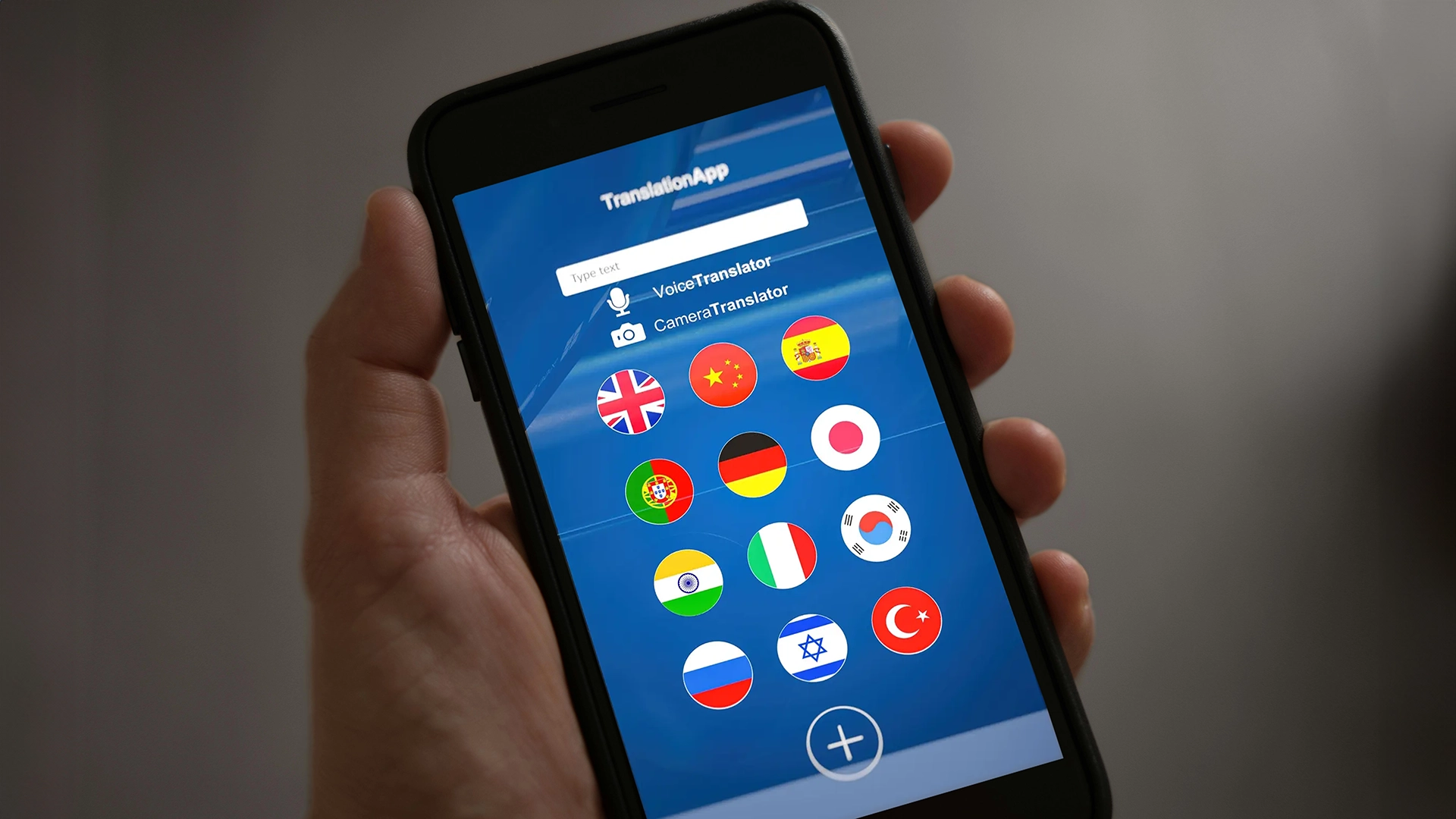In today’s digital world, where users expect personalized and instant experiences, mobile app localization is decisive for international success. According to a recent study, 52% of users abandon apps that are not adapted to their region. This means that something as simple as an awkwardly translated interface, an inaccurate term, or an incorrect date format can make the difference between an active download and an immediate uninstall.
Localization for mobile apps is not just about translating your app into another language. It’s a strategic process that adapts your content, design and functionality to the culture, language and expectations of your target market. In other words, it’s what transforms a global app into an experience that feels truly local.
If your company is ready to expand internationally, localization can be your greatest ally. And if you haven’t yet started, this is the perfect moment to learn how Linguaserve can help you adapt your digital product with professional translation and mobile app localization services, designed to help your brand connect naturally with users in any country.
What is mobile app localization?
Mobile app localization is the process of adapting a mobile application to a specific language, culture and market. While it’s often confused with translation, localization goes far beyond that. Translating means converting text from one language to another, while localizing means adjusting every element, including text, visuals, currencies, measurements, dates, cultural references, tone of voice, and even functionalities, to create an experience that feels coherent, natural and authentic to every user.
For example, a calendar that displays dates in the “MM/DD/YYYY” format may confuse European users, who are accustomed to “DD/MM/YYYY.” Likewise, an image or color that conveys positive associations in one country might carry negative or inappropriate connotations in another.
A well-executed localization strategy takes several key aspects into account:
- Language and tone: adapting text to local linguistic varieties (for example, Mexican Spanish vs. Spanish from Spain).
- Visual elements: modifying icons, colors and images in line with local sensibilities and cultural symbolism.
- Formats and conventions: adjusting currencies, measurement units, dates, addresses and number formats.
- Technical constraints: maintaining interface consistency without compromising design or usability.
- SEO and ASO (App Store Optimization): adapting keywords, titles and descriptions to improve local visibility and discoverability.
In short, localization doesn’t just translate your app, it makes it sound, look and feel local, ensuring that every user enjoys a smooth, intuitive and culturally relevant experience.
Benefits of app localization
Investing in the localization of a mobile app offers tangible and measurable benefits, both in the short term and over the long run. Whether your goal is to reach a wider audience, improve user engagement or increase revenue, localization can provide the competitive edge your app needs to succeed internationally.
✅ Greater global reach: your app can enter new markets more easily, with fewer barriers and a higher number of downloads.
✅ Improved user experience (UX): users are more likely to trust and stay engaged with apps that “speak their language” and respect their culture.
✅ Higher retention rates: localized apps keep users active for longer periods, reducing churn and improving lifetime value.
✅ Competitive advantage: most companies only translate their apps superficially; few truly localize. Doing so will set your brand apart.
✅ Optimized ASO (App Store Optimization): translating and localizing metadata such as titles, descriptions and keywords improves your app’s visibility and ranking in local app stores.
✅ Increased revenue potential: users are more inclined to make in-app purchases or subscribe when the app feels familiar and culturally relevant.
✅ Legal and cultural compliance: localization helps prevent issues related to local laws, regulations or cultural sensitivity.
Beyond these practical advantages, localizing your app also strengthens your brand image. Companies that communicate in multiple languages project professionalism, inclusivity and genuine care for their users. A localized app not only attracts more downloads but also builds stronger brand loyalty and long-term trust.
10 Tips for mobile app localization
The process of localizing a mobile app may seem complex at first, but with careful planning and the right expertise, it becomes one of the most rewarding investments for your business. Here are 10 practical tips to ensure your localization project is efficient, scalable and successful.
- Plan for localization from the very start
Localization should be considered from the earliest stages of app development. Design your app architecture with adaptability in mind: use external resource files for text and create flexible layouts that accommodate varying text lengths and language structures. This will save time and money later on.
- Define your target markets clearly
Before you begin, research and define the markets you want to reach. Not all markets offer the same opportunities. By understanding their potential and characteristics, you can allocate your resources more effectively and prioritize regions that add real value to your business.
- Select the appropriate language and variant
Remember that not all languages are uniform. Choosing the correct variant, such as U.S. English vs. U.K. English or Latin American Spanish vs. European Spanish, will directly influence how users perceive your brand and how comfortable they feel using your app.
- Work with native translators and localization experts
To ensure accuracy and cultural relevance, collaborate with professional linguists who are native speakers and experienced in localization for mobile apps. They will not only translate your content but also adapt tone, context and nuance to fit the cultural expectations of your audience.
- Use specialized localization platforms
Take advantage of translation management systems (TMS) and localization software. These tools help manage multiple languages simultaneously, maintain consistent terminology, and support collaborative workflows between developers, translators and QA teams.
- Adapt your interface and design to each market
Your user interface should be flexible enough to handle text expansion or contraction and to accommodate languages that read from right to left. Additionally, localize icons, colors and imagery to ensure they align with cultural preferences and user expectations in each region.
- Localize multimedia and non-text content
Text is just one part of the user experience. Videos, graphics and audio elements should also be adapted to reflect local culture and context. Colors, gestures, and even background music can carry different meanings across cultures: what feels inviting in one place may feel confusing or inappropriate in another.
- Adjust formats, units and conventions
Your app should display information using the date, time, currency, address and measurement conventions familiar to each target audience. Small details, such as showing temperatures in Celsius or Fahrenheit, have a major impact on how comfortable users feel navigating your app.
- Conduct comprehensive linguistic and functional testing
Testing is essential to guarantee quality. Carry out linguistic quality assurance (LQA) and functional testing in every localized version to ensure that translations display correctly, the interface behaves properly, and no cultural or usability issues arise.
- Partner with an experienced localization provider
Working with a professional provider of mobile app localization services can make all the difference. A trusted partner ensures cultural, linguistic and technical accuracy, optimizes workflows, reduces turnaround times and minimizes costly post-release fixes.
As you can see, mobile app localization is far more than a simple translation; it’s a strategic investment that helps your brand build genuine connections with users around the world. By improving user experience and demonstrating respect for cultural diversity, localization increases engagement, brand loyalty and overall return on investment.
In a market as competitive as today’s, companies that understand the importance of cultural and linguistic adaptation have a clear advantage. If you’re ready to take your application to new markets, Linguaserve can help with comprehensive mobile app localization services, including linguistic testing, functional review and multilingual adaptation, so your app truly speaks the language of your users.



